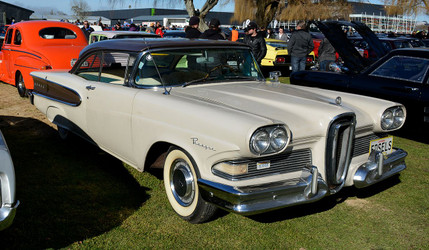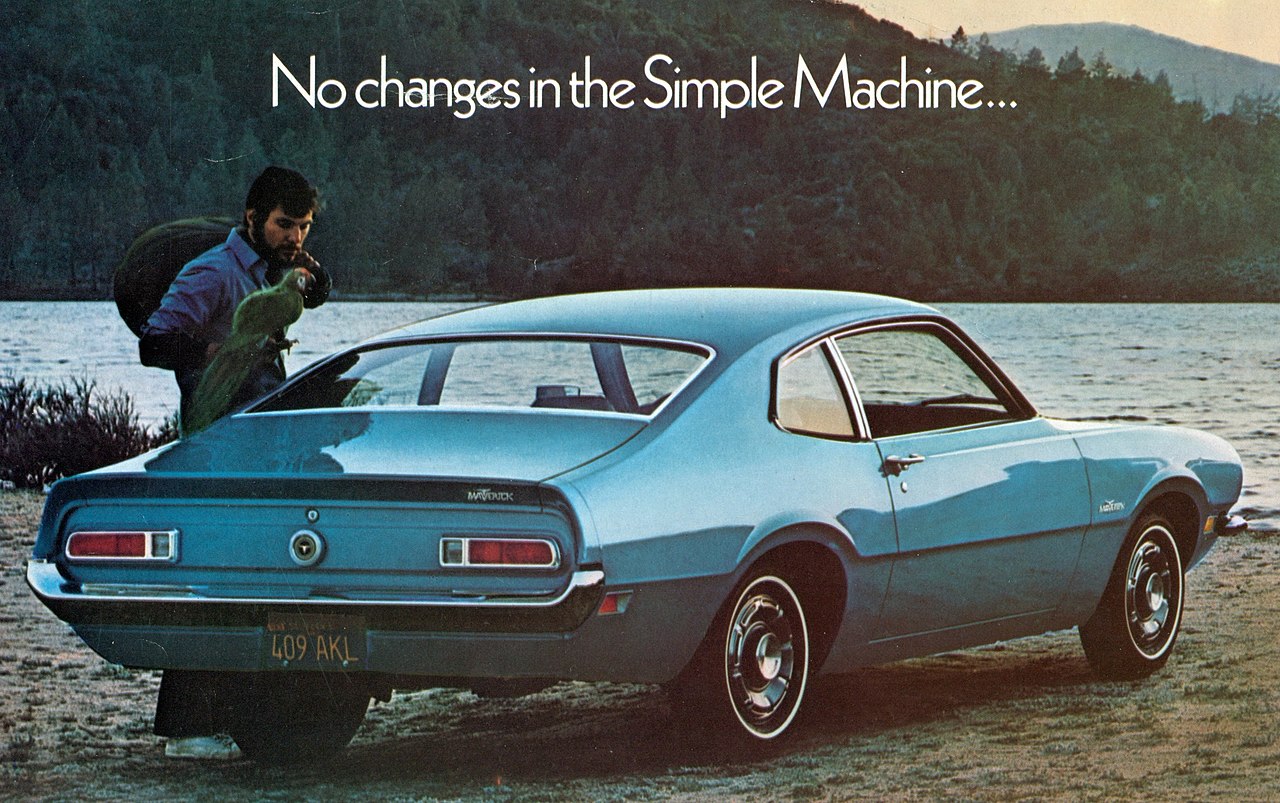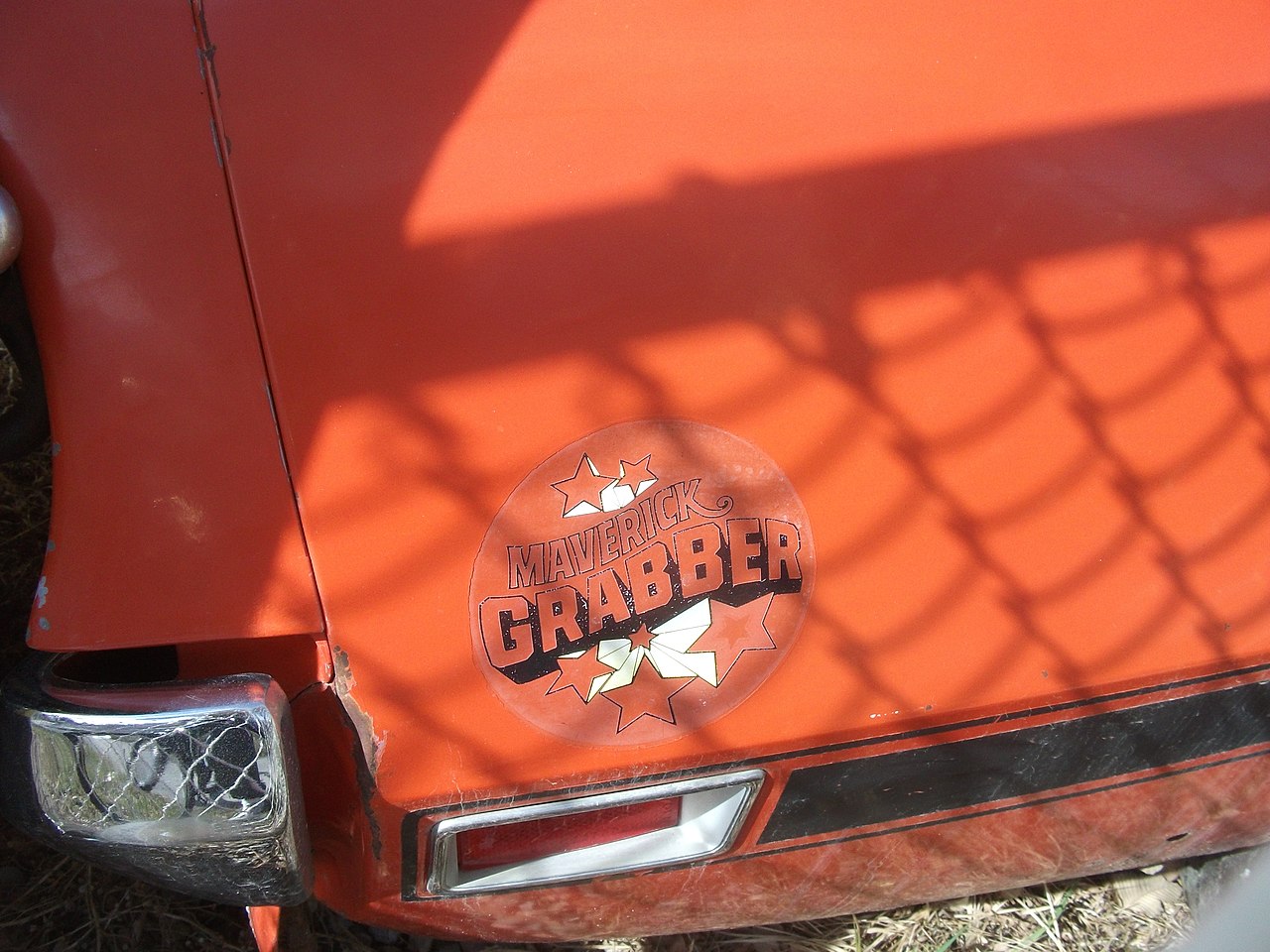Old cars provide names for new Ford trucks
Posted by Dale Edward Johnson on May 11th 2022
When the Ford Motor Company looks for names for new trucks, it often looks at its cars of the past.
The newest trucks in the Ford line-up – the small Ranger and even-smaller Maverick – have names that were first used on Ford automobiles.
Ford brought back the Ranger pickup truck in 2019, after an absence of eight years.
The Ranger name was used on Edsel models from 1958 to 1960. Then in the 1970s Ford brought back the Ranger name and used it on higher trim levels of the F-150 pickup. Then in 1983, Ford moved the Ranger name to an all-new compact truck. Ford dropped the Ranger after 2011, because of a shrinking share of the market. However, outside North America a revised Ranger continued to be offered.
This wasn’t the first time that Ford moved a former car name to a small truck.
Ford entered the compact truck market in the 1970s in a deal with Mazda. Ford bought Mazda trucks, replaced the tailgate, front end trim and labels, and called it the Courier, a name used on a sedan delivery from 1952 to 1960. Sedan deliveries were essentially station wagons with no side windows behind the driver’s and front passenger’s doors. The customers of sedan deliveries were usually small businesses – a florist, grocery store or pharmacist, for example – that needed a small and easy-to-handle delivery vehicle, but didn’t need the capacity of a truck. The sedan delivery body style was replaced in the 1960s with the growing popularity of vans.
The newest and smallest Ford pickup uses a name from another old car – the Maverick.
Ford’s original Maverick was introduced in the spring of 1969 to battle the imports, primarily the Volkswagen Beetle, and also models from Datsun (now Nissan) and Toyota. The original Maverick was more basic than what was considered bare bones in 1969. There was no glove box, just an open shelf below the dashboard. The back windows flipped out instead of rolling down. No V-8s were offered, only two six-cylinder engines of 170 or 200 cubic inches. Not even power steering or power brakes were offered as options on the original Maverick.
The Maverick had a mini-Mustang look, with a long hood and short trunk lid. The Maverick was bigger than a Beetle but smaller than the compact Ford Falcon. It was 179.3 inches long while the Beetle was 158.6 inches and the Falcon was 184.3 inches long.
The Maverick was introduced on April 17, 1969, which was five years after the Mustang was brought out. The Mustang had also been based on the Falcon. All three of these cars were hits in the marketplace.
In the Falcon’s first year, 1960, there were 435,676 sold, easily finishing in top spot in the new compact class. (Chevrolet sold 253,268 Corvairs and Chrysler sold 194,292 Valiants the same year.) The Falcon also set a record high for first-year model, breaking the mark of 81,065 set by DeSoto in 1929. Ironically, 1960 was the final year for the DeSoto.
In the extended first year of the Mustang, from the spring of 1964 to the fall of 1965, there were 619,000 sold, far surpassing expectations.
In the Maverick’s first extended year (same duration as the Mustang) there were 579,000 sold. Obviously a lot of people liked the new Maverick.
A big difference between the Maverick and the Falcon was the variety of body styles offered. The Maverick was only available as a coupe when it was introduced, and a four-door sedan was offered in its second year.
The Maverick made the covers of both Motor Trend and Car and Driver magazines in May 1969 - a rare feat. The new Ford got mixed responses from the motoring press.
In the Maverick’s second year, a V-8 was offered. A sporty version called the Grabber was also introduced. By then, there was the sub-compact Ford Pinto for those looking for something even less expensive and smaller.
The final year for the Maverick was 1977 and it was replaced by the Ford Fairmont. Total North American sales of Mavericks was more than two-million.
The Maverick continued in production in Brazil for another two years. And the Maverick name continued to be used by Ford for crossovers elsewhere: in Australia, from 1988 to 1994; and in Europe since the 1990s. Now the name is back in use in North America.
Ford doesn’t recycle names only for pickups, but also for SUVs; the Lincoln Corsair, a compact SUV, uses a name that was first used on a higher-end Edsel in 1958 and 1959.
Finding automotive restoration supplies is easy at Collectors Auto Supply, which has a full range of vintage auto parts. No matter what kind of collector car parts you are looking for, contact Collectors Autos Supply for all of your vintage car restoration parts.





